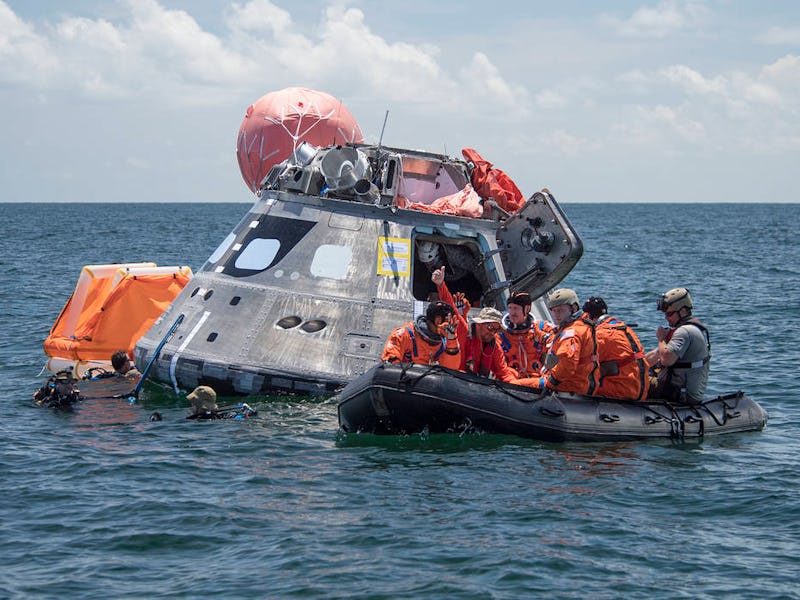NASA Astronauts Prepare To Escape Orion at Sea
In stormy waters, astronauts may need to escape on their own.

NASA is still too cash-strapped to set a date for a crewed mission to Mars, but that hasn’t stopped the space agency from preparing for the final leg of the mission, when the Orion spacecraft will splash down into the Pacific Ocean.
NASA last week tested an Orion crew module in the Gulf of Mexico. The exercise allowed astronauts and engineers to evaluate how the module will perform on the high seas and to assess if space-weary astronauts will be able to escape. Judging by the open hatch, full raft, and thumbs up in the photo above, it appears the test was a success.
“Astronauts returning to Earth in Orion will have spent many days in space, and we want to make sure the last part of their journey goes smoothly no matter what kind of conditions they land in,” said Tom Walker, rescue and recovery lead for Orion at NASA’s Johnson Space Center, in a statement. “Our testing in the Gulf of Mexico gives us an opportunity to practice and evaluate our plans and hardware for how to get crew out of Orion as safely and efficiently as possible.”
NASA designed the Orion capsule to sustain the four astronauts inside for up to 24 hours. If all goes as planned, the Navy will await Orion’s splashdown and arrive promptly to retrieve the space travelers from their charred module.
Thumbs up.
But in case things go wrong, NASA wants to ensure the astronauts can escape Orion on their own. The capsule might land off-target in stormy seas and take on water, requiring that they open the hatch and squeeze out, without naval assistance.
In this escape test, the bright orange space suits worn by the astronauts are similar to those that astronauts will wear when they re-enter Earth’s atmosphere, called Orion Crew Survival System spacesuits. It’s not a fashion statement — bright colors would make the potentially wayward astronauts easier to spot.